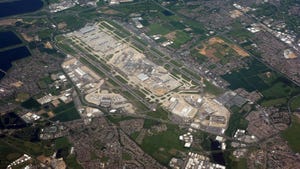
Insight and analysis on the data center space from industry thought leaders.
Master Cloud and Data Center Reconfiguration With an Open NOSMaster Cloud and Data Center Reconfiguration With an Open NOS
Open network operating systems are designed to make private data center networks and cloud environments easier to scale, adapt, and automate.
March 15, 2024

Enterprises rushed to the cloud because it promised to reduce the cost of operating their data centers while increasing productivity, business resiliency, and sustainability. As enterprises moved more applications to the public cloud, it became clear that some of these applications could be better served by their own private data centers. Many started repatriating some of their key data and application workloads.
This trend is gathering momentum. For example, 451 Research found that of the organizations it surveyed, 54% had transitioned workloads or data away from the public cloud. Likewise, IDC predicts that by 2025, 50% of enterprises will primarily deploy high-performance computing (HPC) on-premises, at a managed services provider, or at a colocation provider.
To get maximum value from their applications and data, enterprises need solutions that make it easy to reconfigure their cloud and data center strategies and move applications between the two environments as their business needs change.
Cloud and Data Center Demands Are Changing
Modern enterprises are asking more from clouds and data centers as they make the shift to digitalized operations and adopt 5G, Industry 4.0, advanced AI, and edge computing applications. These applications are typically data- and compute-intensive, so they demand high network capacity and performance. They may also require enterprises to build data centers in new types of locations.
Public clouds allow enterprises to store their data and manage the workloads of business applications without having to operate and maintain more network assets. Many enterprises rely on services from multiple cloud providers to simplify their operations and reduce CAPEX. However, they must give up some control to get these benefits.
On-premises or private data centers give enterprises complete autonomy over the way they manage data and application workloads. This allows an enterprise to scale and configure its data center network to meet the requirements of any application. The trade-off is that the enterprise must take on all the cost and effort required to deploy, operate, and maintain the network.
Enterprises need to combine the best capabilities of public clouds and private data centers to meet the demands of their critical applications and keep their costs in check. This means having greater freedom to repatriate applications from the cloud or migrate legacy applications to the cloud and then optimize and automate them.
Modern Data Center Fabrics Help Simplify Network Operations
For enterprises, the key to gaining this freedom of movement is to deploy a modern data center fabric solution designed to make private data center networks and cloud environments easier to scale, adapt, and automate.
The essential foundation for this fabric is a fully open network operating system (NOS). A NOS designed for openness should implement a highly extensible and customizable data center network architecture that is ready for automation. It should also provide real-time visibility across the network from a single pane of glass so that network operations (NetOps) teams can diagnose problems faster and make smarter decisions. To meet the demands of applications repatriated from the cloud, the NOS must be able to adapt to challenging data center performance and scalability requirements with capabilities.
Tools that can work with the NOS to automate data center fabric operations are another must-have for enterprises seeking to move applications to or from the cloud. For example, complementing the NOS with a data center fabric management and automation platform that supports declarative, intent-based automation can help ease the repatriation or migration process and boost efficiency at every phase of the data center fabric lifecycle.
Enterprise NetOps teams equipped with a NOS automation toolkit based on open frameworks and microservices will find it easier to meet the unique demands of repatriated and legacy applications, reduce their operational complexity, and avoid disruptive manual errors.
NetOps teams know that bringing cloudified applications and workloads back into an on-premises data center comes with significant risks. Automation platforms that can support digital twin technology for the data center fabric using live server data will help them reduce these risks by providing a safe environment for testing the impact of changes made to support an application. They can then adjust as needed and confidently deploy their changes to the live network.
Reaping the Benefits of an Open Data Center Fabric
A high-performance, scalable, and efficient data center fabric can enable any enterprise to confidently rebalance its cloud and data center strategies and migrate or repatriate applications.
With a fabric powered by an open, extensible, and resilient NOS, an enterprise can build a foundation for implementing and customizing network tools to support any repatriated or legacy application. This can also make rebalancing and repatriation easier for NetOps teams by simplifying and automating the entire data center fabric lifecycle with confidence and on their own terms.
Overall, it increases agility and reduces risk by safely developing, testing, and application integrations, configurations, and automation.
Dave Nowoswiat has more than 25 years of experience in the data, telecom, and enterprise industry. As Research and Education Network & Enterprise Strategist for Nokia, he assists enterprises in their digital transformation and automation plans.
About the Author
You May Also Like







